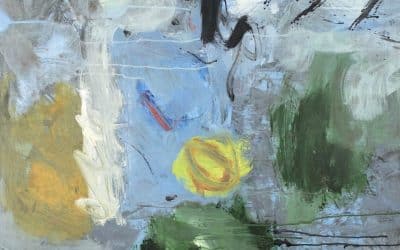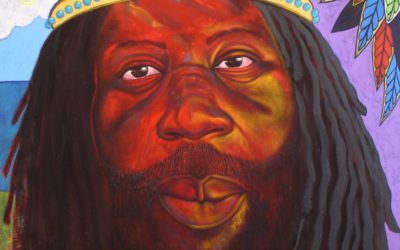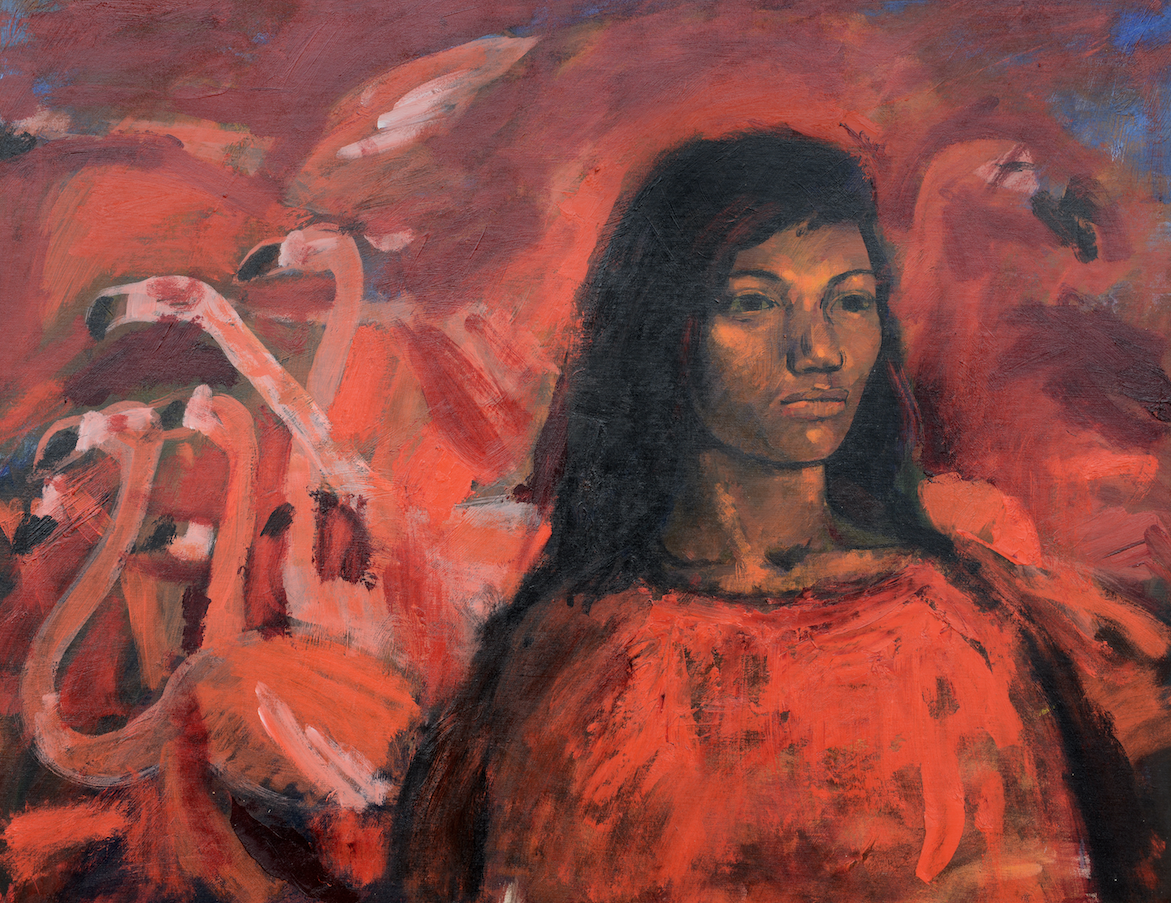
By Natalie Willis
It is time to revisit an old favourite with the detail and context it truly deserves. A cross-hatch of brushstrokes, full of the looseness, movement and vibrancy associated with R. Brent Malone’s work, gives way to the key figures from which this piece in the National Collection gets its title. “Woman With Flamingoes” (1996-97), a gift to the Collection donated in memory of Jean Cookson, depicts a flamboyance of flamingoes with a woman staring beyond the frame. Though the flamingoes are bustling and full of movement, she is purposefully still. Malone renders her the focus of the work amidst a pink and crimson cacophony of tropical birds.
To those familiar with his practice and with the troupe of Bahamian Pottery and Chelsea Pottery trained Bahamian artists, Malone was – by his own words – heavily influenced by renowned and art-historically significant European and American artists. He, along with Maxwell Taylor and Kendal Hanna, looked to the resources they had to feed their growing need for understanding and contextualising their art practices – and the nearest stop was the bookshelves of the Pottery or the Library. Van Gogh, Pablo Picasso, Paul Cézanne, David Hockney, to name a few, were the masters of painting practice that Malone looked at to inform his practice, before and after his studies at the then Beckenham School of Art (later, Ravensbourne College of Art and Design) in London in the 1960s. Though a well-travelled man, he always found his way back home.
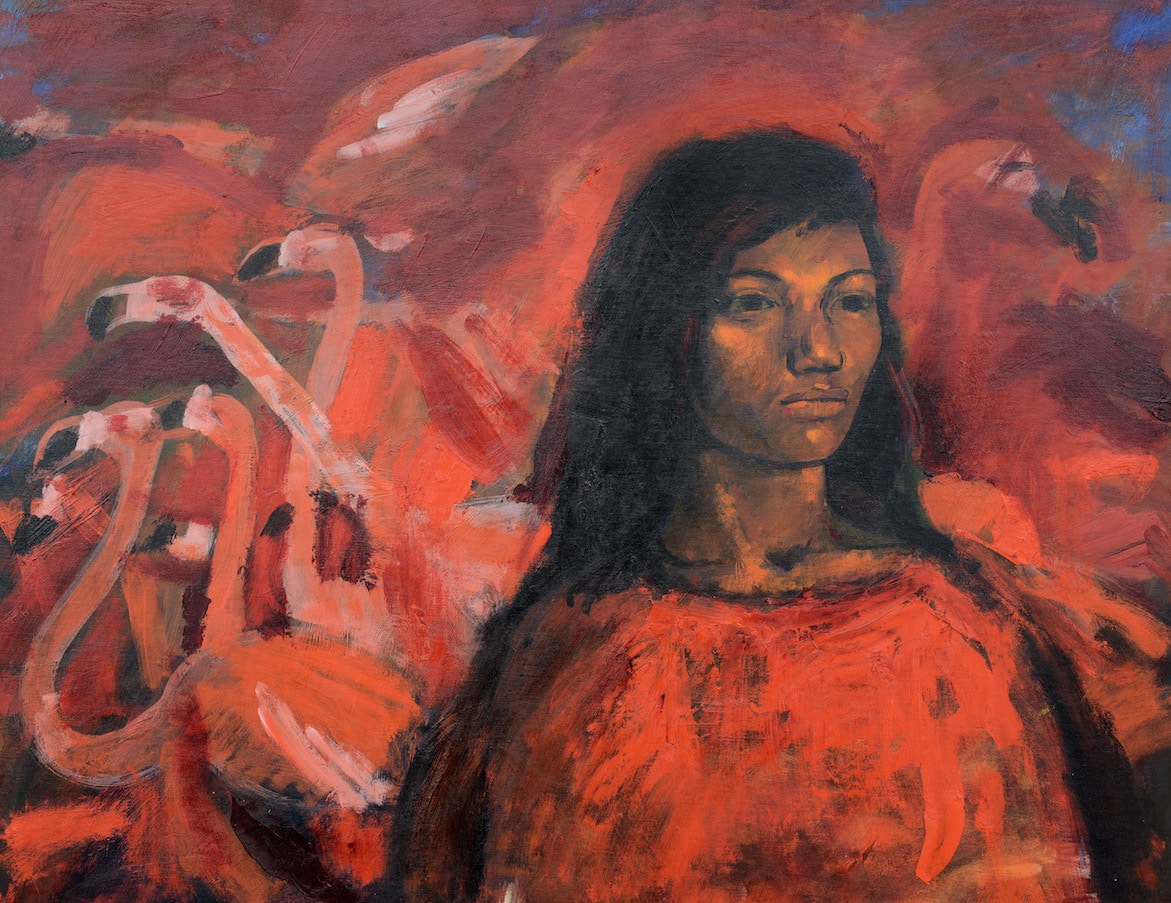
“Woman With Flamingoes” (1996-97), R. Brent Malone, acrylic on canvas, 24 x 30. Part of the National Collection, donated in memory of Jean Cookson.
“Woman With Flamingoes” (1996-97) from the National Collection, was chosen from his series of work inspired by his time spent in Bali, Indonesia – funded by his mural commission for UBS – during the later years of his life. In a Bahamian context, the flamingoes are indicative of a sense of home as we see the national bird throughout the background of the work and the Balinese woman herself, though clearly of a South Pacific origin judging by her features, also carries that ambiguity of skin tone and facial structure that we associate with so many mixed-race Bahamians, giving the piece a duality of familiar and foreign.
One can also believe that Malone had himself often felt this duality – having grown up during the ending of the colonial era and feeling a sense of dual British and Bahamian identity given his background as a European-descent Bahamian. He was a proud Bahamian, but also immensely proud of the MBE he received from Queen Elizabeth II, and also equally invested in the idea of a young, independent Bahamas governing herself. The young woman’s eyes are trained forward, focusing on something in the distance, which brings to mind the motto of The Bahamas: ‘Forward, upward, onward, together’. In some ways, it could be said that Malone was inserting his own Bahamian cultural sensitivities and understandings into the painting. Malone appears to integrate himself into the environment of the Balinese woman, just as he integrated himself so firmly into Bahamian culture after returning home from university and carved a path for Bahamians of European descent to claim their own Bahamianness.
Amidst these different artists and styles he studied, Malone – the perpetual student – brings to mind the work of a particular artist given the style and context of the work: the celebrated Paul Gauguin. Gauguin is often hailed as one of the best painters of all time – lofty title, but his work is undeniably beautiful, be it by his own hand or for the paintings of the South Pacific he drew inspiration from. The French painter’s personal life has also been reframed, namely his relations with young Tahitian girls and women (including taking a Tahitian wife of 13 years of age) during his first trip to Tahiti. Many people are still of the belief that if the artwork is good, or significant or the like, that the life of the artist is irrelevant – good work is surely always good work, or so one might think.
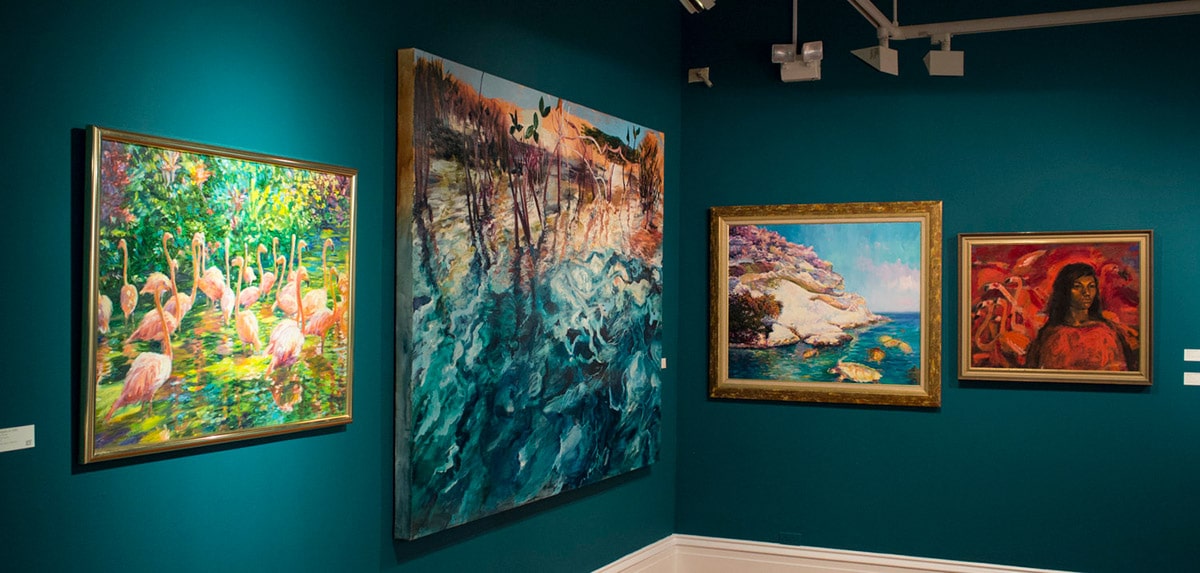
Installation view of “Woman With Flamingoes” (1996-97) by R Brent Malone as seen in the current Permanent Exhibition, “Revisiting An Eye For the Tropics”, on view through March 2018.
Regardless of the artist’s intent, the notion of the ‘autonomous’ artwork that exists independently of its maker has been largely debunked by much of the art world. While this may have helped to give rise to the proliferation of the ‘artist celebrity’ culture that has made Marina Abramovic the spectacle she is today, or Andy Warhol’s complete embracing of this ideal, it is also a way to highlight something so simple. Despite the fact that a work may not function the way you as the artist intended it to, despite the fact that works gain new meanings over time, your trace of self will forever be part of the work, your residue remains.
Gauguin had undeniably dirty hands. Scandals aside, though we understand the particular period of time Gauguin was working in, a time when people from elsewhere, Others, were exoticised in a very particular way, there are some interesting parallels in Gauguin’s experiences and Malone’s near-spiritual pilgrimage to Bali. Gauguin found himself dissatisfied with European civility and falseness, seeking a sort of authenticity of life so often thought to be found in tropical ‘paradises.’ Malone was more a mystic and spiritual being, with as deep an appreciation of the environment and landscape as he had of Bahamian culture. The profound difference between the men, is the difference in gaze – and one might hope that this is a product of the gap in time between their existences in the world at least in part.
Whereas Gauguin exoticised, Malone appears to uplift. Gauguin’s gaze was more to do with an erotic/exotic curiosity, whereas even Malone’s nude paintings exude a sense of sensuality rather than sexuality. There are similarities still in looking to one of Gauguin’s first paintings in Tahiti, entitled “Vahine no te tiare” in 1891, known in English as “Woman with a Flower” or “Tahitian Woman With Flower.” The comparison is easy to make – two South Pacific women looking out of the frame, but the lives of these men make the works entirely different outside of their time contexts.
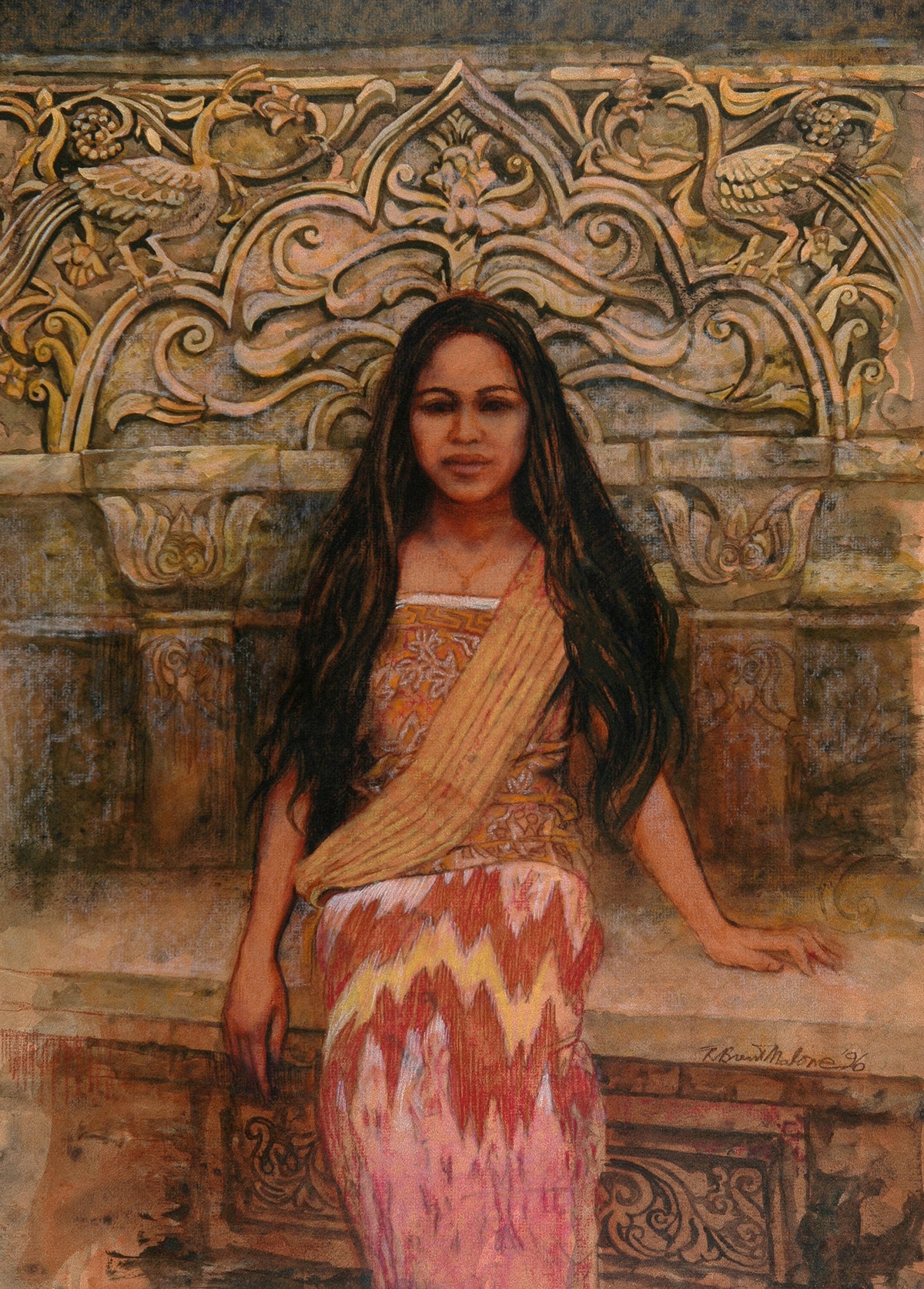
“Bali Girl with Scarf” (1996), R. Brent Malone, watercolour on paper, 29 ½ x 21. Part of the Dawn Davies Collection.
Malone, having lived through the Civil Rights Movement as a young man – watching through the tube as so many Bahamians were, and growing up in a country and community that is diverse, gives him an entirely different viewpoint to his foreign subject. While growing up in a Bahamas that is 80% Black African-descent might not seem like diversity to some, when we consider that we live in a world where much of the ‘default’ is assumed to be white (we’re looking at you ‘flesh’ toned crayon, among other things!), globally speaking, the Bahamas is diverse. Being part of a Caribbean melting pot and trying to work through understanding his Bahamianness through his position as a white, European-descent man, in a country breaking off its colonial shackles and working through this history, we can begin to appreciate the way he treated the subjects of his work. This a vital distinction to be made: knowing who you are in the world and what power you have in your gaze.
Malone knew himself, he was a passionate activist for Bahamian arts and culture and used his position to do cultural work that needed to be done. Though he was often hailed as the “Father of Bahamian art,” he has been noted to mention that he believes that the title lies with Maxwell Taylor. Arguably, it was the pair of them together, exploring two perspectives and two sides of the same coin. Bahamian culture is in many ways part of that amalgam of ‘black culture.’ Here, we can take ‘black culture’ to refer to the care and pride in rebuilding identity for those who were descended from displaced West African peoples during the slave trade, people who lost their sense of origin and place as we traditionally understand belonging. In The Bahamas, as in much of the Caribbean, we are all ‘from elsewhere.’ America has it, we have it, the Caribbean at large has it. But our conch-salad culture, as we so often refer to it, also benefits from an inclusivity when we want to acknowledge it. White Bahamians are still Bahamian, so are Chinese Bahamians, so are Greek Bahamians, so are Haitian Bahamians, Jamaican Bahamians – we are all parts of the same beautiful mix, but within that is of course rather a lot to unpack.
To quote Dr. Erica M. James, former Director of the NAGB and the curator of the R. Brent Malone “Reincarnation” Retrospective in 2015, she states: “I think it’s time for Bahamians to really understand the depth and complexity of their own history. Bahamian culture and identity may not be something that can be articulated in precise ways because it is a prismatic identity. It’s not singular, and we need to understand the complexity of that.”
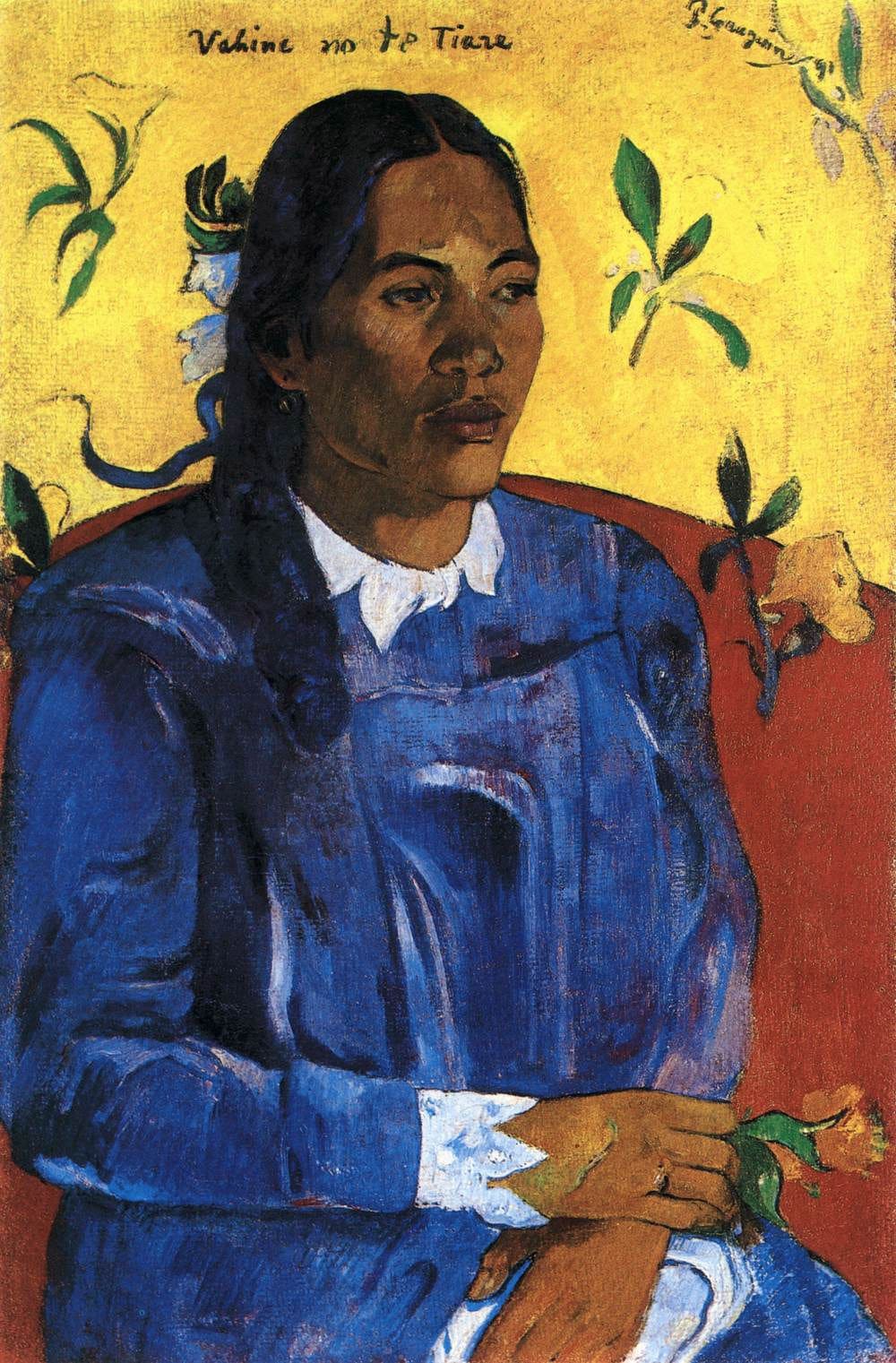
“Vahine No te Tiare (Woman With a Flower)” (1891), Paul Gauguin, oil on canvas, 27 ½ x 18, Ny Carlsberg Glyptotek, Kopenhagen. Photo: Ole Haupt.
Clearly that ethos rings true not just in the curation of the exhibition that acted as a sort of homecoming for this work, amongst its brother and sister pieces, but also in the practice of Malone himself. His engagement and acknowledgement of Junkanoo as an art in its own right, his understanding that Junkanoo was Bahamian culture as a whole as much as it is rightly a part of our Black culture. He inserted himself into the Bahamian narrative, not forcefully, but by his own integrity in integrating himself with the wider Black Bahamian community and, as many fondly recall, his charming character. Sincerity speaks in the work, so does soul – and Malone had both in great measure as we remember his presence in this piece.
